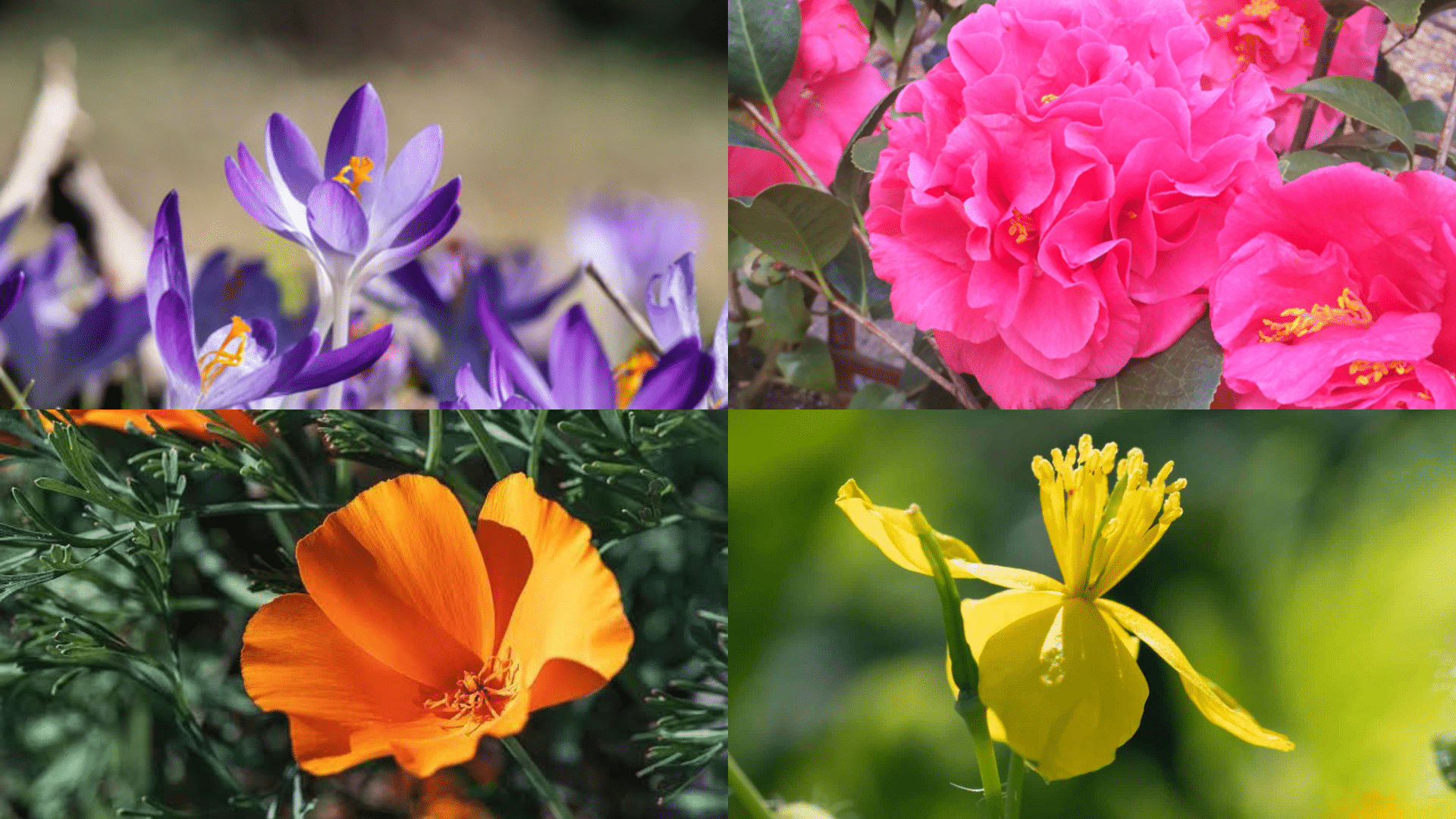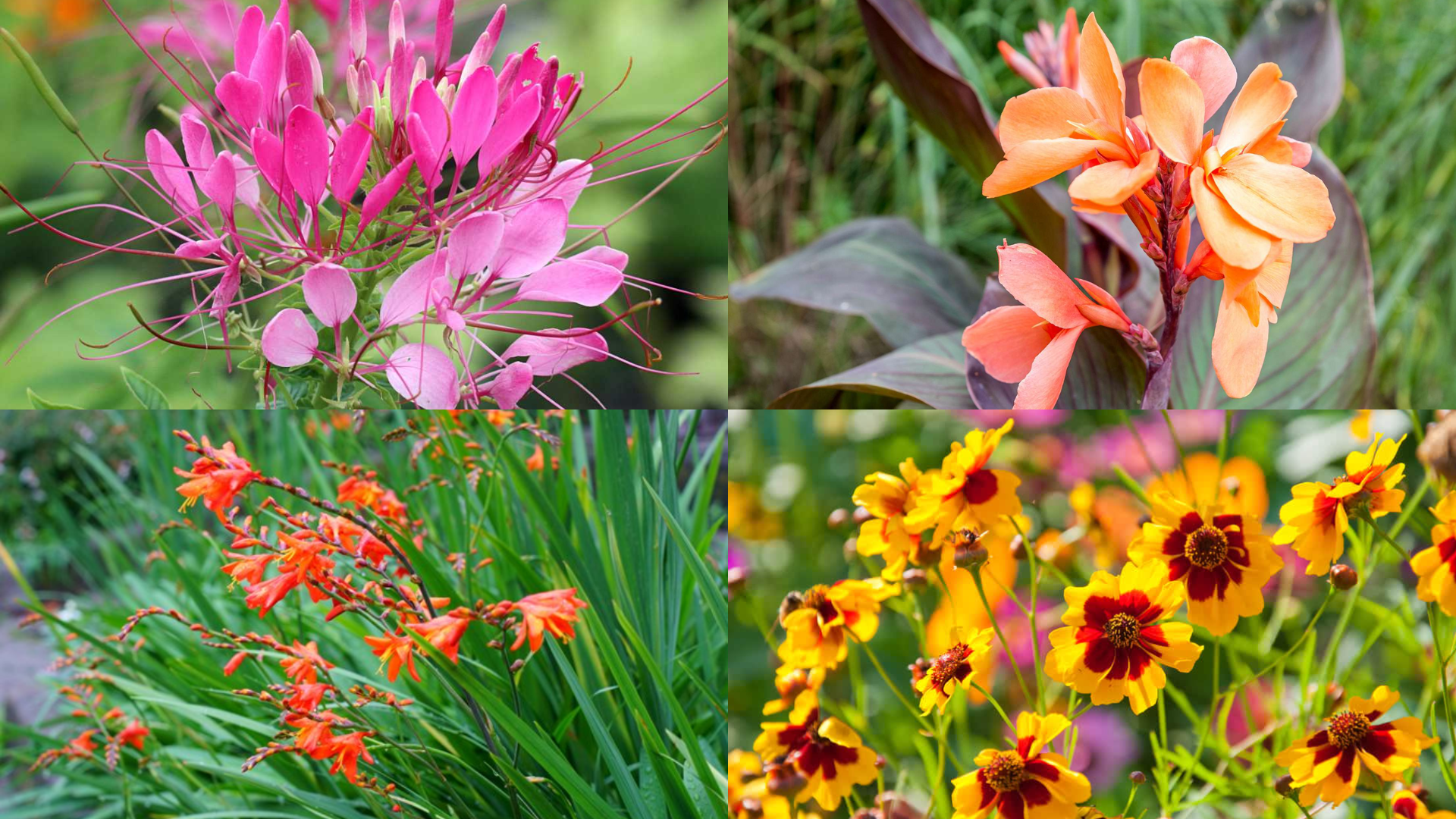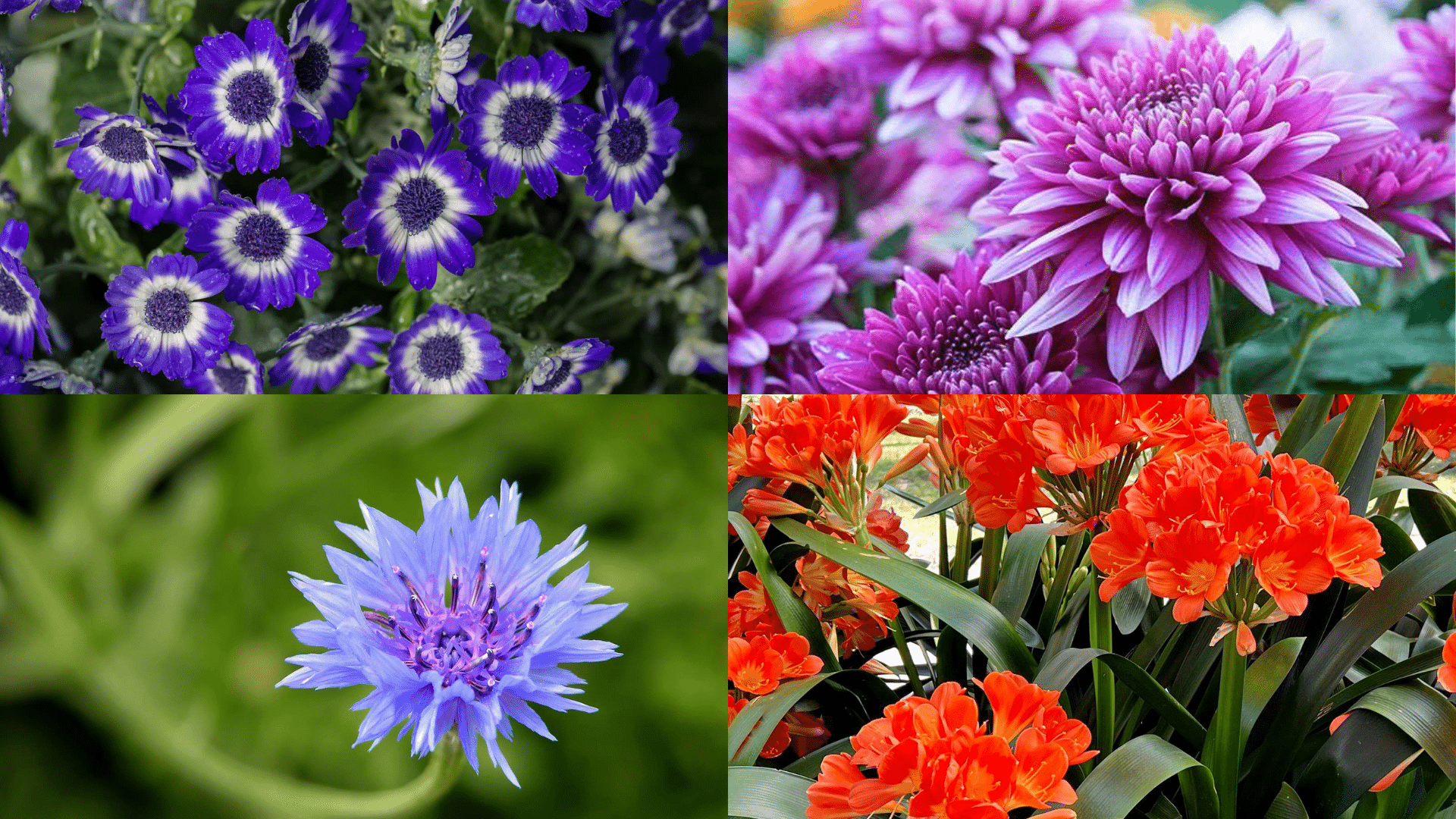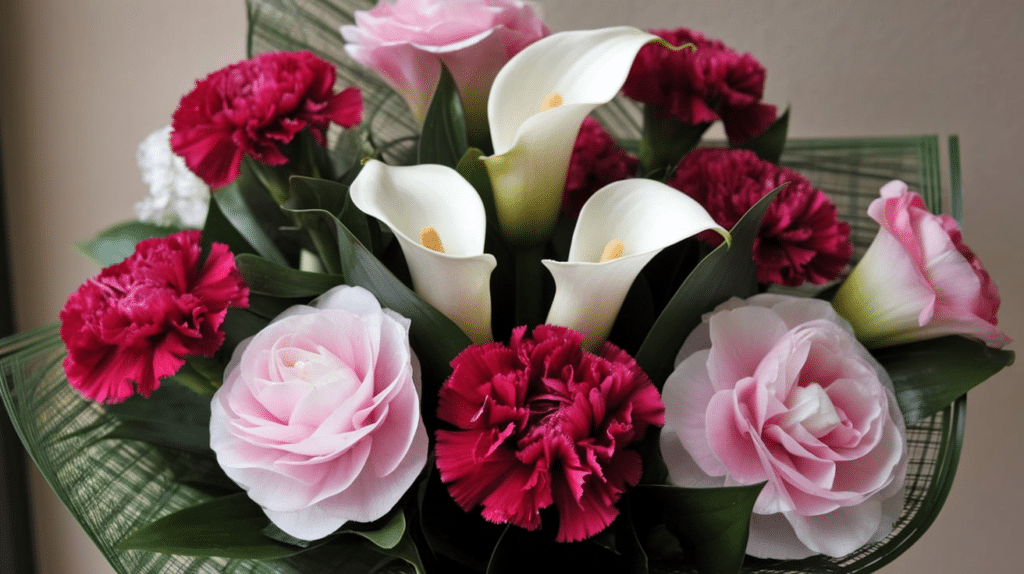Ever stood in a garden center completely overwhelmed by choices?
The plant world has thousands of flowering species, but sometimes you’re looking for something specific – like flowers that start with C.
While many gardeners can name a few C flowers offhand, they’re often surprised to find out dozens of unique options they’ve never encountered.
From the common to the rare, from spring bloomers to winter wonders, the letter C contains an entire spectrum of colors, forms, and growing habits.
These 33 C-named beauties range from simple-to-grow backyard staples to exotic specimens that will make fellow plant lovers stop and ask, “What is that?”
Charming Spring Flowers That Start with C

Charming spring flowers that start with “C” include vibrant blooms like the Crocus, which symbolizes youth and cheerfulness, and the Camellia, known for its beauty and love symbolism.
These flowers bring color and life to gardens, often marking the arrival of spring with their early blooms.
1. Crocus
Scientific Name:Crocus sativus
Commonly found in Europe, Western Asia, and North Africa, the Crocus blooms in early spring. It symbolizes youth, cheerfulness, and resurrection, and is known for its culinary and medicinal uses, particularly the antioxidant-rich saffron.
Fun Fact: The saffron spice comes from the stigma of the Crocus flower.
2. Camellia
Scientific Name:Camellia japonica
Native to East Asia, particularly Japan, China, and Korea, Camellias bloom from late winter to early spring. They symbolize love, beauty, and admiration and are also used in skincare and hair health with their nourishing oil.
Fun Fact: Camellias are the state flower of Alabama.
3. California Poppy
Scientific Name:Eschscholzia californica
Found mainly in California and the western United States, the California Poppy blooms from spring to early summer. It represents peacefulness and imagination and is known for its calming effects in herbal remedies.
Fun Fact: The California Poppy is the state flower of California.
4. Celandine
Scientific Name:Chelidonium majus
Celandine is native to Europe and Asia and typically blooms from early to mid-spring. Symbolizing joy and protection, it has been used in traditional medicine for treating liver and skin ailments.
Fun Fact: The name “celandine” is derived from the Greek word for swallow, as the plant blooms when swallows return in spring.
5. Chionodoxa
Scientific Name:Chionodoxa luciliae
Native to the Eastern Mediterranean region, Chionodoxa blooms in early spring. It symbolizes new beginnings and hope, and it is admired for its early bloom in gardens and landscapes.
Fun Fact: Known as the “Glory-of-the-Snow” for its snowdrop-like appearance.
6. Cowslip
Scientific Name:Primula veris
Native to Europe and parts of Asia, Cowslips bloom in early spring. They symbolize key elements such as a new dawn and youth and are used in herbal remedies for respiratory and digestive health.
Fun Fact: Cowslips are often used in folklore for their protective properties.
7. Cyclamen
Scientific Name:Cyclamen persicum\
Cyclamens are native to Europe and the Mediterranean, blooming in the spring. They symbolize sincere love and compassion and are used for ornamental purposes, with some species having medicinal uses for respiratory ailments.
Fun Fact: Cyclamen flowers curl upward when the petals mature, creating a spiral effect.
8. Cherry Blossoms
Scientific Name:Prunus serrulata
Commonly found in Japan, Korea, and China, Cherry Blossoms bloom in spring. They are symbols of beauty, transience, and renewal and are celebrated for their fleeting beauty and cultural significance.
Fun Fact: Cherry Blossoms are celebrated in Japan during “Hanami,” a tradition of viewing the flowers in bloom.
9. Corydalis
Scientific Name:Corydalis solida
Native to Europe and parts of Asia, Corydalis flowers bloom in early spring. They symbolize peacefulness and are known for their ornamental beauty in gardens, as well as their mild medicinal properties.
Fun Fact: The name “Corydalis” comes from the Greek word for “crested,” referring to the shape of the flower.
10. Cleopatra (Tulip variety)
Scientific Name:Tulipa ‘Cleopatra’
This variety of tulip is commonly found in European and North American gardens, blooming in early spring. It represents elegance, love, and beauty and is admired for its striking red and yellow petal combination.
Fun Fact: Cleopatra tulips are named after the famous queen, symbolizing timeless beauty.
Colorful Summer Flowers That Start with C
Colorful summer flowers that start with “C” include the vibrant Canna Lily, known for its bold and striking blooms, and the cheerful Cosmos, which adds a burst of color to gardens.
These flowers thrive in the warmth of summer, attracting pollinators and brightening up landscapes with their vivid hues.
11. Clematis
Scientific Name:Clematis spp.
Native to Europe and Asia, Clematis flowers bloom from late spring to summer. They symbolize ingenuity, intelligence, and spirituality and are popular as climbing plants in gardens.
Fun Fact: Clematis can grow up to 20 feet and are often used to cover trellises and fences with colorful blooms.
12. Clove Pink
Scientific Name:Dianthus caryophyllus
Clove Pink, a variety of Carnation, is native to the Mediterranean region and blooms during the summer. It symbolizes love, admiration, and distinction and is often used in fragrant floral arrangements.
Fun Fact: Clove Pinks have a distinctive spicy fragrance, making them popular in potpourri and scented products.
13. Chocolate Cosmos
Scientific Name:Cosmos atrosanguineus
Native to Mexico, Chocolate Cosmos blooms during the summer months. They symbolize love and beauty and are cherished for their dark, velvety flowers that emit a subtle chocolate fragrance.
Fun Fact: The flowers of Chocolate Cosmos are so fragrant that they smell like cocoa.
14. Cress
Scientific Name:Lepidium sativum
Cress, native to Europe and Asia, blooms in early summer. It symbolizes purity and vitality, and the young leaves are used in salads, with health benefits such as being rich in vitamins and antioxidants.
Fun Fact: Cress is one of the fastest-growing plants and can be ready to harvest in just a few weeks.
15. Chinese Lantern
Scientific Name:Physalis alkekengi
Native to Eastern Asia, Chinese Lantern blooms from summer to fall. It symbolizes protection and prosperity and is valued for its vibrant orange, papery husk that resembles a lantern.
Fun Fact: The fruit inside the lantern is edible, though it is not commonly consumed.
16. Cerastium
Scientific Name:Cerastium tomentosum
Native to Europe and Asia, Cerastium flowers bloom in late spring to summer. They symbolize resilience and purity and are commonly grown as ground covers with small, white flowers.
Fun Fact: Cerastium is also known as “Snow-in-Summer” because of its silvery foliage and white blooms.
Fabulous Fall Flowers That Start with C

Fabulous fall flowers that start with “C” include the rich-colored Chrysanthemum, symbolizing longevity and fidelity, and the striking Chinese Lantern, known for its unique, papery husk.
These flowers bring warmth and vibrant colors to the cooler autumn months, enhancing gardens and floral arrangements.
17. Cleome
Scientific Name:Cleome hassleriana
Cleomes, native to South America, bloom in the summer with striking flowers in shades of pink, purple, or white. They symbolize creativity, renewal, and beauty and are popular for their unique appearance in gardens.
Fun Fact: Cleomes are often called “Spider Flowers” because of their long, spidery stamens.
18. Canna Lily
Scientific Name:Canna indica
Canna Lilies, native to tropical regions of the Americas, bloom in summer and fall. They symbolize passion, beauty, and warmth and are valued in gardens for their large, showy flowers in bright hues.
Fun Fact: The rhizomes of Canna Lilies are edible, often used in cooking in certain regions.
19. Crocosmia
Scientific Name:Crocosmia x crocosmiiflora
Native to Southern Africa, Crocosmia blooms in late summer with vibrant orange, red, and yellow flowers. They symbolize attraction and enthusiasm and are frequently used in gardens to attract hummingbirds.
Fun Fact: Crocosmias are often referred to as “Montbretia” and are known for their fiery, eye-catching blooms.
20. Coreopsis
Scientific Name:Coreopsis tinctoria
Coreopsis is native to North America and blooms from early to late summer. It symbolizes cheerfulness and positivity, often used in gardens to add vibrant color and attract pollinators like bees and butterflies.
Fun Fact: The plant’s seeds resemble ticks, giving it the alternative name “Tickseed.”
21. Cuphea
Scientific Name:Cuphea ignea
Native to Central and South America, Cuphea blooms in late summer with tubular flowers in red, purple, and orange hues. They symbolize joy and are often planted to attract hummingbirds and other pollinators.
Fun Fact: Cuphea is also called the “Cigar Plant” because its flowers resemble the shape of cigars.
22. Cosmos
Scientific Name:Cosmos bipinnatus
Native to Mexico, Cosmos bloom in summer with vibrant colors like pink, purple, and white. They symbolize peace, love, and harmony and are commonly planted in gardens due to their easy growth and vibrant appearance.
Fun Fact: Cosmos flowers are known for their ability to attract butterflies and bees.
23. Celosia
Scientific Name:Celosia argentea
Celosia is native to tropical regions of Asia and Africa and blooms from summer to fall. It symbolizes warmth and life, and its vibrant, flame-like flowers add color to gardens and floral arrangements.
Fun Fact: Celosias are often referred to as “Cockscomb” due to their resemblance to a rooster’s comb.
Winter Wonders: Flowers That Start with C

Winter wonders that start with “C” include the elegant Cyclamen, blooming in the chill with its heart-shaped leaves and delicate flowers, and the cheerful Cineraria, known for its vibrant blooms.
These flowers add color and life to winter landscapes, brightening up the colder months with their beauty.
24. Cineraria
Scientific Name:Pericallis × hybrida
Cineraria, known for its vibrant, colorful blooms, is found in tropical regions like South Africa and India. These plants bloom in late winter or early spring and symbolize grace and compassion. They are a favorite in gardens for their vivid flowers.
Fun Fact: Cineraria flowers come in shades of purple, pink, and white, making them popular for garden displays.
25. Chrysanthemum
Scientific Name:Chrysanthemum morifolium
Chrysanthemums, also known as mums, are native to East Asia and bloom in the fall. They symbolize longevity and fidelity. These flowers are popular in gardens and floral arrangements, attracting both pollinators and admirers with their wide range of colors.
Fun Fact: In Japan, chrysanthemums are considered a symbol of the emperor’s family and the imperial throne.
26. Cornflower
Scientific Name:Centaurea cyanus
Cornflowers are native to Europe and are known for their striking blue flowers, blooming in late spring to summer. They symbolize wealth and abundance. Cornflowers add vibrant color to gardens and are often used in floral arrangements.
Fun Fact: Cornflower petals were once used to dye fabrics blue.
27. Clivia
Scientific Name:Clivia miniata
Clivia is native to southern Africa and is known for its bright orange, trumpet-shaped flowers that bloom in spring. It symbolizes strength and pride. Clivia is often used as an ornamental houseplant due to its striking, long-lasting blooms.
Fun Fact: Clivia flowers can last up to six weeks when cut.
28. Calla Lily
Scientific Name:Zantedeschia spp
Calla Lilies are elegant, trumpet-shaped flowers native to Southern Africa, blooming in late spring to summer. They symbolize purity, beauty, and rebirth. Known for their large, white flowers, they are often used in bouquets and as decorative plants.
Fun Fact: Despite the name, calla lilies are not true lilies.
29. Calendula
Scientific Name:Calendula officinalis
Calendulas, commonly called marigolds, are native to Europe and Asia and bloom from late winter to early spring. They symbolize warmth and healing, often used in herbal remedies for their soothing properties. Calendulas are also popular in gardens for their vibrant colors.
Fun Fact: Calendula petals are commonly used in skin-care products for their anti-inflammatory properties.
30. Columbine
Scientific Name:Aquilegia vulgaris
Columbines are native to North America and parts of Europe and bloom in late spring. They symbolize love, faith, and an open heart. Known for their distinctive spurred flowers, columbines are a favorite in gardens and often attract hummingbirds.
Fun Fact: The name “Columbine” comes from the Latin word for “dove” due to the flower’s shape.
31. Candytuft
Scientific Name:Iberis umbellata
Candytuft is native to Europe, Asia, and parts of North America, blooming in late spring. It symbolizes sweetness and lasting affection, and its white or pink flowers add charm to gardens and floral arrangements.
Fun Fact: Candytuft flowers are often used in floral arrangements due to their long-lasting blooms.
32. Calycanthus
Scientific Name:Calycanthus floridus
Calycanthus, also known as sweetshrub, is native to North America and blooms in late spring to early summer. It symbolizes admiration and beauty. With fragrant, unique flowers, it is a popular ornamental plant in landscaping.
Fun Fact: The sweet fragrance of the flowers is often compared to a blend of fruit and spice.
33. Cabbage Rose
Scientific Name:Rosa centifolia
The Cabbage Rose, known for its dense, multi-petaled blooms, is native to Europe and Asia, blooming from spring to early summer. It symbolizes love and elegance, often used in perfumes and floral arrangements.
Fun Fact: Cabbage roses have been cultivated since the 17th century for their fragrance.
How to Grow and Maintain Flowers That Start with C

Growing flowers that start with C can add wonderful variety to your garden. While each plant has specific needs, here are practical tips to help these blooms thrive.
Light and Location
Most C flowers fall into three categories:
- Full sun lovers (6+ hours daily): Coreopsis, Cosmos, Calendula, Centaurea (Bachelor’s Button)
- Partial shade plants (3-6 hours): Columbine, Campanula, Cyclamen
- Shade-tolerant varieties: Camellia, Clivia
Place your plants according to these needs for best results. Too much or too little sun is the most common reason these flowers struggle.
Soil and Watering
Different C flowers have different soil preferences:
- Well-draining soil: Most C flowers, especially Cosmos and Carnations
- Rich, moist soil: Calla Lilies and Cannas
- Acidic soil: Camellias (pH 5.5-6.5)
For watering, check the soil rather than following a strict schedule. When the top inch feels dry for most C flowers, it’s time to water. Carnations and Cosmos are more drought-tolerant once established, while Callas need consistently moist soil.
Seasonal Care
Spring:
- Plant summer-blooming annuals like Cosmos and Cleome
- Divide overcrowded Coreopsis and Campanula
- Apply a slow-release fertilizer to most perennial C flowers
Summer:
- Deadhead regularly to extend blooming (especially Calendula and Cosmos)
- Provide support for tall varieties like Cleome and climbing Clematis
- Watch for pests like aphids on Coreopsis and mildew on Chrysanthemums
Fall:
- Plant spring-blooming bulbs like Crocus
- Cut back Coreopsis and Cosmos after flowering
- Mulch around Camellia and Clematis for winter protection
Winter:
- Protect tender perennials like Cannas with mulch in zones 7-8, or dig and store them indoors in colder areas.
- Reduce watering for dormant plants, but don’t let them dry out completely
- Monitor winter-blooming Camellias and Christmas Rose (Helleborus), as they may flower during this season
- Move potted Cyclamen and Clivia to protected areas above freezing
- Use winter for planning and ordering seeds for spring C flowers
With these basics covered, you’ll be well on your way to successfully growing and enjoying beautiful C flowers in your garden.
The Bottom Line
From the humble cornflower to the exotic Chinese fringe flower, these 33 “C” bloomers are botanical treasures hiding in plain sight. Who knew one letter of the alphabet could contain such floral riches?
Next time you’re staring at an empty garden bed or planning a special bouquet, remember that C flowers offer solutions for nearly every situation.
Need drought-tolerance? Coreopsis has you covered. Looking for winter blooms? Camellias brave the cold when other plants have given up.
Why not challenge yourself to add at least one new C flower to your garden this season?
Whether you choose the cheerful cosmos that butterflies adore or the statement-making calla lily, your garden (and flower arrangements) will thank you for expanding beyond the everyday options.
















